
Human Resources for Health
Scope & Guideline
Catalyzing change in health systems with cutting-edge research.
Introduction
Aims and Scopes
- Workforce Planning and Management:
Research in this area addresses the methodologies for estimating health workforce needs, implementing effective workforce planning strategies, and evaluating the impact of these strategies on health outcomes. - Health Workforce Policy and Governance:
This includes studies on the formulation and impact of policies related to health workforce education, regulation, and management, aiming to improve health service delivery and address workforce challenges. - Capacity Building and Training:
This scope focuses on the development and evaluation of training programs for healthcare professionals, including community health workers, to enhance their skills and improve healthcare delivery. - Workforce Retention and Job Satisfaction:
Research on factors influencing job satisfaction, retention rates, and turnover intentions among healthcare workers, highlighting the importance of workplace conditions and support systems. - Health Equity and Workforce Diversity:
Investigations into gender disparities, minority representation, and the implications of workforce diversity for health equity, particularly in low- and middle-income countries. - Impact of Global Events on Health Workforce:
Analysis of how global health crises, such as the COVID-19 pandemic, affect workforce dynamics, including burnout, mental health, and workforce migration. - Innovative Models of Care:
Exploration of new models for delivering health care that involve task-sharing, interdisciplinary collaboration, and the integration of technology into health workforce practices.
Trending and Emerging
- Mental Health and Well-being of Healthcare Workers:
Increasing attention is being paid to the mental health, burnout, and overall well-being of healthcare workers, especially in the context of the ongoing impact of the COVID-19 pandemic. - Integration of Technology in Workforce Management:
Research on the use of digital tools and telemedicine to enhance workforce efficiency and training is gaining momentum, addressing the need for modern solutions in healthcare delivery. - Community Health Worker Empowerment:
There is a growing body of literature focused on the empowerment, training, and integration of community health workers into health systems, recognizing their critical role in improving access to care. - Interdisciplinary Collaboration in Health Services:
Emerging studies emphasize the importance of interdisciplinary collaboration among healthcare professionals to enhance service delivery and patient outcomes. - Policy Responses to Global Health Crises:
Research analyzing the effectiveness of policy responses to global health emergencies, including lessons learned from the COVID-19 pandemic, is increasingly prevalent. - Addressing Health Equity through Workforce Diversity:
The journal is seeing more studies aimed at understanding how workforce diversity impacts health equity, particularly in underserved populations and low-resource settings. - Task-Sharing and Innovative Care Models:
There is a rising trend in exploring task-sharing practices and innovative models of care that optimize the use of available human resources to improve health outcomes.
Declining or Waning
- Traditional Workforce Structures:
Research focusing on conventional roles and hierarchies within the health workforce appears to be declining, as there is a growing emphasis on innovative, flexible, and collaborative models of care. - General Workforce Migration Trends:
While still relevant, the exploration of general trends in workforce migration has lessened, with more specific studies focusing on the impact of migration on health systems and individual healthcare worker experiences. - Single-Disease Focused Workforce Studies:
The focus on workforce issues related to single diseases (e.g., HIV, TB) is waning in favor of broader health systems approaches that address multiple health challenges and integrate care across various health domains. - Static Workforce Demographics:
Research that merely presents demographic data of healthcare workers without analysis of implications for policy and practice is becoming less common, as there is a shift towards actionable insights and recommendations. - Overemphasis on Quantitative Metrics:
There is a noticeable decline in studies that focus solely on quantitative metrics of workforce performance without contextual understanding, as qualitative insights are increasingly valued for comprehensive analysis.
Similar Journals

NEW ZEALAND MEDICAL JOURNAL
Exploring Innovations in General MedicineNEW ZEALAND MEDICAL JOURNAL, published by the NEW ZEALAND MEDICAL ASSOCIATION, has been a prominent platform for disseminating significant medical research since its inception in 1945. Serving as an essential resource for healthcare professionals, researchers, and students in the field of medicine, this journal encompasses a wide array of topics in General Medicine, contributing to the dynamic discourse in the medical community. With an ISSN of 0028-8446 and an E-ISSN of 1175-8716, the journal enjoys good visibility and is ranked in the Q3 quartile of the Medicine (miscellaneous) category in 2023, highlighting its respectable standing among peers. Moreover, with a Scopus rank of #221 out of 636 and a percentile rating of 65%, it plays a crucial role in influencing medical research trends and practices in New Zealand and beyond. Though not operating under an open-access model, the journal guarantees a valuable exchange of scholarly work and critical insights, making it an indispensable instrument for anyone dedicated to advancing health care knowledge and research in the region.

Healthcare in Low-resource Settings
Innovating health practices for a sustainable future.Healthcare in Low-resource Settings, published by PAGEPRESS PUBL in Italy, is an esteemed open-access journal that has been committed to advancing knowledge and innovative practices in the healthcare domain since 2013. With an E-ISSN of 2281-7824, this journal focuses on critical issues pertinent to health policy, public health, and social sciences, particularly in settings marked by limited resources. Despite its recent categorization in the Q4 quartile for various health-related disciplines in 2023, the journal serves as a vital platform for disseminating research aimed at improving health outcomes in underserved populations. Researchers, professionals, and students alike can access its content freely, promoting widespread engagement and exchange of ideas within the global health community. By publishing high-quality, peer-reviewed articles, Healthcare in Low-resource Settings seeks to bridge gaps in healthcare knowledge and advocates for sustainable solutions to pressing health issues, particularly in vulnerable communities.

PUBLIC HEALTH REVIEWS
Leading the Charge in Public Health InnovationPUBLIC HEALTH REVIEWS, published by FRONTIERS MEDIA SA in Switzerland, serves as a premier platform for disseminating essential research and reviews in the field of public health. With an Open Access policy implemented since 2015, this journal makes significant contributions to the global body of public health knowledge, ensuring unrestricted access to its comprehensive articles. Recognized for its excellence, PUBLIC HEALTH REVIEWS boasts an impressive 2023 ranking in the Q1 quartile for both Community and Home Care and Public Health, Environmental and Occupational Health, placing it among the top journals in its category. Its Scopus rankings further affirm this status, with the journal occupying the 1st rank in its community care category, showcasing its influence and reach. Researchers, professionals, and students alike benefit from its rigorously vetted articles, capable of shaping policies and informing practices essential for public health improvement. Whether you are looking to deepen your understanding of contemporary health issues or engage with the forefront of public health research, PUBLIC HEALTH REVIEWS is an indispensable resource.
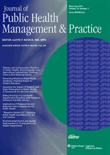
JOURNAL OF PUBLIC HEALTH MANAGEMENT AND PRACTICE
Elevating Public Health Standards Through Scholarly ExcellenceJOURNAL OF PUBLIC HEALTH MANAGEMENT AND PRACTICE, published by Lippincott Williams & Wilkins, stands as a pivotal resource in the fields of Health Policy and Public Health. With an ISSN of 1078-4659 and an E-ISSN of 1550-5022, this journal has been disseminating high-quality research since its inception in 1995, serving a global audience from its base in the United States. Renowned for its contributions, it holds a respectable ranking within the Scopus database, positioned in the 55th percentile for both Public Health, Environmental and Occupational Health, and Health Policy. The journal’s focus is to provide a platform for scholarly articles that enhance the practice of public health management, making it an essential read for researchers, practitioners, and students alike. By fostering a community of informed professionals, the journal aims to bridge the gap between theory and practice, ensuring that advancements in public health are effectively addressed and disseminated.
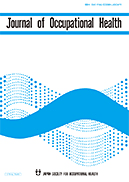
JOURNAL OF OCCUPATIONAL HEALTH
Empowering health at work for a safer tomorrow.JOURNAL OF OCCUPATIONAL HEALTH, published by WILEY, serves as a vital platform for sharing research and advancements in the field of public health, with a specific focus on occupational health and safety. With an impact factor that underscores its significance—ranking in the Q2 category of Public Health, Environmental and Occupational Health—this journal has established a reputation for excellence, reflected by its position in the 76th percentile of its category according to Scopus. This Open Access journal, available since 2018, ensures that valuable research findings are accessible to a global audience, enhancing collaboration and innovation in addressing occupational health challenges. Covering a wide array of topics from workplace safety to the impacts of environmental factors on worker health, the JOURNAL OF OCCUPATIONAL HEALTH invites researchers, professionals, and students to contribute and engage with the latest developments in the field, thereby fostering a healthier work environment for all.

ACADEMIC PSYCHIATRY
Transforming Psychiatry Through Collaborative KnowledgeACADEMIC PSYCHIATRY, published by SPRINGER, stands as a premier interdisciplinary journal dedicated to the burgeoning fields of psychiatry, mental health, and medical education. With its ISSN 1042-9670 and E-ISSN 1545-7230, this journal has maintained a prominent position in academia since its inception in 1989, evidenced by its convergence period extending to 2024. Featuring a respectable impact factor, it consistently ranks in the second quartile (Q2) across key categories: Education, Medicine (miscellaneous), and Psychiatry and Mental Health. The journal enjoys a solid standing in Scopus rankings, being placed #433 out of 1543 in Social Sciences - Education and #267 out of 567 in Medicine - Psychiatry and Mental Health, indicating a significant influence within these domains. Aimed at researchers, practitioners, and students alike, ACADEMIC PSYCHIATRY serves as a crucial platform for disseminating high-quality research, innovative methodologies, and evidenced-based practices that advance the understanding and treatment of psychiatric disorders on a global scale, making it an essential resource for anyone interested in the mental health field.
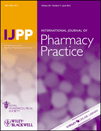
INTERNATIONAL JOURNAL OF PHARMACY PRACTICE
Exploring the future of pharmacy through scholarly contributions.INTERNATIONAL JOURNAL OF PHARMACY PRACTICE is a distinguished peer-reviewed journal published by Oxford University Press that has been serving the pharmacy and healthcare community since 1991. With the ISSN 0961-7671 and E-ISSN 2042-7174, the journal aims to advance the field of pharmacy practice through the dissemination of high-quality research and innovative practices. The journal is recognized for its impactful contributions, holding a Q1 status in Pharmacy and laying within the Q2 to Q3 quartiles across various health-related categories in 2023, underscoring its commitment to excellence. It occupies a notable position within Scopus rankings, most prominently within the Health Professions: Pharmacy category, where it ranks 12th out of 45 journals, reflecting its relevance and significance in the field. Scholars and practitioners benefit from the journal's rich repository of knowledge that encompasses diverse topics, including pharmaceutical sciences and health policy, supporting the development and enhancement of pharmacy practices worldwide. Although it is not an open-access journal, it continues to be a crucial resource for professionals and academics seeking to stay at the forefront of pharmacy practice advancements.

Revista Medica del Uruguay
Connecting researchers to enhance patient care.Revista Medica del Uruguay is a distinguished open-access journal published by the SINDICATO MEDICO URUGUAY, dedicated to advancing knowledge in the medical field since its inception. With an ISSN of 0303-3295 and an E-ISSN of 1688-0390, this journal provides a platform for researchers, professionals, and students to share their findings and insights in a rapidly evolving healthcare landscape. Based in Montevideo, Uruguay, it plays a pivotal role in promoting health research within Latin America and beyond. Since transitioning to open access in 2002, the journal has significantly broadened its reach, allowing for greater dissemination of vital research and fostering collaboration among medical professionals. The Revista Medica del Uruguay remains committed to publishing high-quality articles that contribute to the improvement of medical practices, ultimately enhancing patient care and health outcomes. Researchers and practitioners seeking to stay informed about the latest developments in medicine will find this journal an invaluable resource.
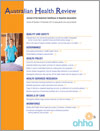
Australian Health Review
Transforming Challenges into Health SolutionsAustralian Health Review is a prestigious peer-reviewed journal published by CSIRO PUBLISHING, focusing on the dynamic field of health policy. Established in 1980, this journal has continuously evolved to address contemporary health challenges in Australia and beyond, showcasing research that informs policy decisions and enhances health care delivery. With an impressive Q2 ranking in the sector of Health Policy and a Scopus rank of #162 out of 310, it holds a significant position in the academic community, offering vital insights to researchers, practitioners, and educators alike. Although not an open-access journal, it provides valuable research contributions that advance the discourse in health policy and practice. Located at UNIPARK, BUILDING 1, LEVEL 1, 195 WELLINGTON RD, LOCKED BAG 10, CLAYTON, VIC 3168, AUSTRALIA, the journal's comprehensive scope spans from 1980 to 2024, reflecting on the evolving landscape of health research. By disseminating high-quality studies, the Australian Health Review continues to play an essential role in shaping health policy and improving health outcomes.
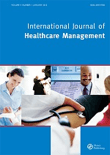
International Journal of Healthcare Management
Exploring the nexus of leadership and health policy.The International Journal of Healthcare Management, published by ROUTLEDGE JOURNALS, TAYLOR & FRANCIS LTD, stands as a crucial platform for the dissemination of innovative research and insights in the realm of healthcare management. With a focus on health policy, leadership, and management, this journal aims to bridge the gap between theory and practice, providing a valuable resource for researchers, professionals, and students alike. It boasts an impressive Q2 ranking in Leadership and Management and a Q3 ranking in Health Policy for 2023, highlighting its influence and relevance within the academic community. With an accessible ISSN of 2047-9700 and E-ISSN of 2047-9719, the journal features an array of peer-reviewed articles that promote the advancement of knowledge and best practices in healthcare settings. While currently not offered as open access, the journal publishes high-quality research that underscores the importance of effective management strategies in enhancing healthcare outcomes. Positioned in the United Kingdom, the journal continues to contribute significant knowledge and frameworks that guide healthcare leaders and policymakers in navigating the complexities of governance in health services.